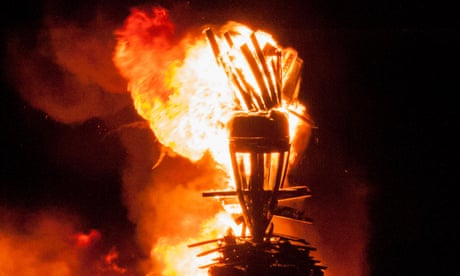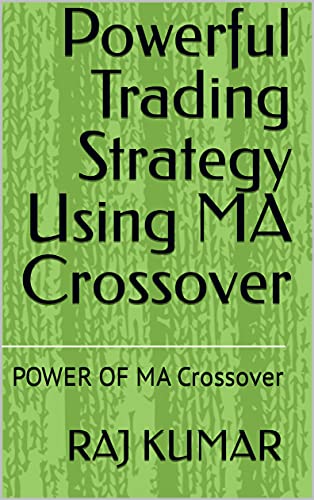Latest News HighLights

From stargazing to a festival of fire: five activities to light up the UK’s dark winter months
Fire ritual in Morayshire “We,” says the Brocher, face lit by fire and dark with soot, “have creosote in our blood.” In their blood, on their hats, on their boots, down their backs – the Brochers, and in particular the Clavie Crew, have creosote everywhere, except in their whisky. They take that with water, a substance they otherwise disdain as being fine for quenching a thirst but a terrible thing to allow near a bonny flame. Some definitions: Brochers are residents of the Broch, a local name for the village of Burghead, on the Moray coast. The Clavie Crew are the men responsible for the Burning of the Clavie. What is the Clavie? A large wooden barrel full of tarred staves which is set on fire and paraded through the busy streets before being carried up a small hill and set on top of a round stone altar. There, before cheering crowds, creosote is flung on by the bucketload and the barrel burns until it collapses. The fire ritual, which may have roots in the Pictish past, takes place on 11 January, to see in the new year. Brochers, being stubborn folk, have yet to make the switch from the Julian to the Gregorian calendar. Overseeing all this is the Clavie King, Dan Ralph. Attending the Clavie ritual – as I have had the privilege to do on three occasions – you can sometimes catch flashes of this wee man in his peacoat with his sea-dog look, directing the crew and tending the flame. A person of great energy and purpose, he is in his 70s and has been King since 1988. It is not a role from which one retires. “Oh no,” he says. “You go on until you die.” As the local undertaker, he would know. When I close my eyes and think of the Clavie, I see the faces of local people lit with fire and joy. It is one of the great sights of Scotland The UK has a number of fire rituals, such as Up Helly Aa in Shetland and the bonfire spectaculars of Sussex, each with its own character and history. I sense a kinship between these and the marking of the winter solstice at prehistoric monuments such as Stonehenge, Newgrange in Ireland and the chambered tomb of Maeshowe in Orkney. A flaming torch held aloft by an islander dressed as a Viking or a beam of light creeping down an ancient passageway at sunset on the shortest day both seem part of the same human impulse. Such occasions help us appreciate darkness and cold as a stage upon which the light, natural or human-made, makes its welcome entrance. They are, in a way, rehearsals for spring. Fire now, snowdrops soon. When I close my eyes and think of the Clavie, I see the crew as shadows against the blaze; the faces of local people lit with fire and joy; the last sparks swirling up into the night as people draw near for their bit of blackened wood – which they keep as a blessing on the year. It is one of the great sights of Scotland. The heat and flame and tarry reek are a lighthouse in the midnight sea of winter. Peter Ross Peter Ross is the author of Steeple Chasing: Around Britain by Church (Headline, £22) , available at guardianbookshop.com Birdwatching in Norfolk Pink-footed geese in Norfolk at dawn. Photograph: Andrew Parkinson/Alamy There’s never stillness on the Norfolk coast. Even in the darkest days of winter, when light has fizzled to a few short hours of grey and damp, there’s drama in the wings and voices of wild birds. I am at Cley, my soul place, where – binoculars ever about my neck – I spent much of my childhood, learning about birds at the historic Norfolk Wildlife Trust (NWT) nature reserve . In spring, the reeds resound with birdsong, with warblers just back from Africa. In summer, redshanks, avocets and little ringed plovers breed here, and spoonbills in the wood nearby. Autumn gales bring auks and skuas from the Arctic. But winter’s voices are most urgent and most powerful. For now is our time of geese. Now is the time to stand in awe – no other word will do – and watch their great hordes coming through the dusk to roost in coastal marshes. Two species of Arctic geese spend winter around Cley, and all along the Norfolk coast. The dark-bellied brent goose is a solid affair: short-necked, short-legged and wonderful. Its throaty burbling is the sound of winter in Norfolk saltmarsh, though in midwinter they will also roam inland in search of cereal shoots. Thousands of dark-bellied brent geese come to Cley each winter from Siberia, and most years they are joined by a handful of pale-bellied brent geese from Svalbard. Since brent geese live and feed in saltmarsh, they need to visit freshwater every day, to drink and bathe. This they do, with earnest, chest-deep conversation, on the scrapes of NWT’s Cley Marshes. For now is our time of geese. Now is the time to stand in awe and watch their great hordes coming through the dusk to roost The leaner, warier pink-footed geese that throng our coast come here from upland tundra in Iceland and Greenland. This entire population – more than half a million birds – visits the UK in winter, with many tens of thousands coming to Norfolk. Unlike the charcoal brent geese, pinkfeet are subtly pastel-coloured birds: their cocoa heads and necks fading into soft buff chests; the grey-blue of their shoulders echoed in a neat bar that bisects their clean white tails. Pinkfeet are beautiful to look at, but hearing their massed voices is nothing less than thrilling. From mid-autumn all through winter, they spread out across the county from their coastal roosts to feed on the waste left in fields after the sugar beet harvest. Everyone I know drops everything and rushes out on hearing the shrill, clear clamour of the geese, drawn to the Arctic wildness they carry in their wings, touched by the stories of the tundra in their voices, and humbled by their mighty journeys. At dusk they come back to their roosts along our coast. Standing late on a winter afternoon on the East Bank at Cley Marshes, I cloak myself in geese. Ten thousand of these wondrous birds may roost here, in the safety of the scrapes. As they come they fill the darkening sky with gossip, and the haunting emptiness of a Norfolk winter with life and joy. Nick Acheson Nick Acheson is a naturalist, conservationist and author of The Meaning of Geese: A Thousand Miles in Search of Home ( Chelsea Green, £12.99 ) , available at guardianbookshop.com . He runs guided birdwatching tours of Norfolk for Wildlife Worldwide , including a three-night Late Winter tour which departs in March 2024 and costs from £795pp . A lighthouse stay in Cornwall Lizard Lighthouse, with cottages, at sunset. Photograph: Trevor Clapp/Alamy I’ve always been slightly obsessed with lighthouses, especially ones in the UK. I have an unashamedly romantic view of them as they flash their warnings, keeping ships clear of the reefs, shallows and treacherous cliffs. They have always induced in me a childish pleasure, similar to that of hearing a helicopter fly overhead or a steam engine go by. All three are guaranteed to make me stop and stare. There is more to it than that, though; something about the solid, immovable nature of a lighthouse that makes it irresistible. As a child, I dreamed of becoming a lighthouse keeper, though the year I was old enough to make this a reality, 1998, was the year the last staffed UK lighthouse was automated. Automation meant lighthouses and their attendant keepers’ cottages were abandoned, which means many are now available to rent – perfect places from which to watch winter storms close up. The six former keepers’ cottages set between the two distinctive white towers of the Lizard Lighthouse are a good bet. Set on the cliff’s edge at Lizard Point in Cornwall and open to the sea on three sides, Lizard Lighthouse dominates this stretch of coast. The waters here are particularly treacherous and make for some of the best storm watching opportunities in the country, with a combination of exposed headlands, dramatic cliffs, offshore rocks, and islands over which huge waves crash. Throughout the night, the beam of the lighthouse continued its reassuring sweep, and we retreated behind the thick walls of our cottage to the soundtrack of waves Sevenstones, the six-bed cottage in which my family holed up for the weekend, overlooks a patch of sea that can be entirely calm one day and a boiling cauldron the next. Staring out of its small paned windows, I experienced the sea at its wildest while being entirely protected from it, behind thick walls. Exactly the sort of cosiness I look for in a winter break. The five-mile circular walk from the lighthouse along samphire-lined cliffs to the much-photographed Kynance Cove is perfect for a lull in the storm. Afterwards, as we turned inland towards Lizard village, fish and chips from Smugglers takeaway was very welcome as evening came on. Throughout the night, the beam of the lighthouse continued its reassuring sweep every three seconds, and we retreated behind the thick, whitewashed walls of our cottage to the soundtrack of waves crashing against the rocks below. If I slept particularly well, it was thanks in no small part to the proximity of the monolithic lighthouse, built to withstand anything the weather and the sea could throw at it, and the childish thrill of being as close to becoming a lighthouse keeper as I’m ever likely to get. Of course, sound sleep is less guaranteed in the case of poor visibility, when the lighthouse’s powerful foghorn goes into action. Thankfully, earplugs are provided. Wyl Menmuir A three-night stay at Sevenstones Cottage at Lizard Lighthouse, which sleeps six, starts at £494 , ruralretreats.co.uk . Wyl Menmuir is the author of The Draw of the Sea (Quarto, £9.99) , available at guardianbookshop.com skip past newsletter promotion Sign up to Inside Saturday Free weekly newsletter The only way to get a look behind the scenes of the Saturday magazine. Sign up to get the inside story from our top writers as well as all the must-read articles and columns, delivered to your inbox every weekend. Privacy Notice: Newsletters may contain info about charities, online ads, and content funded by outside parties. For more information see our Privacy Policy . We use Google reCaptcha to protect our website and the Google Privacy Policy and Terms of Service apply. after newsletter promotion Winter feasting in Somerset Feast night at Pennard Hill Farm in Somerset. Photograph: Amelia Johnson Stonehenge tells us many things about early life in southern England. One of the most surprising is just how long we have enjoyed midwinter feasts. Archaeological remains at Durrington Walls, where the henge’s builders lived, suggest its inhabitants gathered for gargantuan midwinter pig roasts there more than 4,500 years ago. I thought of those Neolithic revellers when I ate at Pennard Hill Farm, in Somerset, a few weeks ago. I stood beside a huge open fire in its newly restored feasting barn, a foraged blackberry spritz in one hand, the other reaching for a morsel of smoked mutton to dip in seaweed mayo. The food may have been beyond our ancestors’ wildest imaginings but the same craving for light, joy, warmth and sustenance on the year’s shortest days sparked the idea for the farm’s new winter feasts. Run by Pippa and Tom Godber-Ford Moore (don’t try saying that with a mouth full of mutton), the farm is on a scenic ridge above the Glastonbury festival site. Best known, until now, for its all-inclusive festival glamping packages, the farm’s monthly feasts launched last month, testing the ground before three winter gatherings. “Feasting has always been about people coming together, and winter is the perfect time to do that,” says Tom. “It’s a chance to pull out the sheepskins, light the fires and spend long, cosy nights eating, drinking and being merry around tables groaning with delicious food.” Served in the barn’s candlelit upstairs dining space, the feasting menus differ but all are a chance for chef and game expert Tom to champion wild, foraged and regeneratively farmed ingredients, including charcuterie made from his own rare-breed pigs, and beef from neighbouring Brown Cow Organics. Our trial run started with crunchy partridge goujons served with quince aioli, and a bright, winter salad of wood pigeon with cleavers, cobnuts and a ruby-hued elderberry sauce. Next came perfectly pink Gothelney pork, cooked on that open fire, with spoonfuls of lovage-swirled chickpeas and fat little slices of onion squash with Westcombe Dairy ricotta. The food may have been beyond our ancestors’ wildest imaginings but the same craving for light, joy, warmth and sustenance on the year’s shortest days sparked the idea The feasts tie neatly in with a growing UK demand for polished, farm-led cooking served in a convivial, rustic setting. In nearby Sparkford Jules and Steve Horrell run popular long-table dining experiences in a former cow barn in winter ( horrellandhorrell.co.uk ), and foodies flock to Ceredigion for “smoked stuff, cured stuff and stuff roasted over fire” at Fforest’s annual winter feast ( coldatnight.co.uk ). In summer, these farm-to-fork dining experiences are just as delicious, of course, but they are competing with a heaving culinary calendar of picnics, festivals and barbecues. In winter they take on a more primal dimension. Electric lighting, central heating and desk jobs may have dulled our seasonal senses but in rural counties such as Somerset, where so many livelihoods are still dependent on heavy summer toil – be that in tourism or farming – winter can be an easier time to eat out. It was always so. From ancient Greece to the middle ages, many couples chose to marry in winter, squeezing their weddings between the end of the harvest and the start of the planting. Then there are all those ancient winter festivals, from Samhain and Saturnalia to the winter solstice and Christmas – a shared seeking out of light in the dark. Which is what these feasts are really about. We can’t all be at Stonehenge to watch the sun rise through its stones on the winter solstice but we can get a flavour of that same uplifting magic by eating indulgent foods in a candlelit barn among likeminded souls. Rhiannon Batten The next winter feasts are on 2 and 9 December and cost £50pp ( pennardhillfarm.co.uk ). Rhiannon Batten is the co-author of Rustle Up (Pavilion, £7.99) , available at guardianbookshop.com Stargazing in Dumfries and Galloway Stargazing at Clatteringshaws Loch in Galloway Forest Park Robert Burns knew what it was like to feel blessed under a sky of Galloway stars. “Thou ling’ring star with less’ning ray / That lov’st to greet the early morn / Again thou usher’st in the day,” he wrote in his melancholy poem To Mary in Heaven. And, in some ways, coming to the Galloway hills offers the chance to see the same wild skies Scotland’s national bard saw. To stretch eyes into the blackness to see thousands of stars; to glimpse the arching Milky Way as it streaks silvery bands across the heavens. The winter months are ideal for stargazing in the Southern Uplands, particularly in Galloway Forest Park , the first designated Dark Sky Park in the UK. It’s an almost secret corner of the country, a 300-sq mile pocket of isolation: far from any centres of population its ridges are entirely free of light pollution. Rarely, if ever, will you have to share the sky with others. Better still, your chances of seeing the northern lights and other celestial activity soar as the nights darken. Tragically, the Scottish Dark Sky Observatory overlooking Loch Doon near Dalmellington was destroyed in summer 2021 in a suspected arson attack, but opportunities still abound. Night sky forecasts are relayed at each of the Forest Park’s two visitor centres, Glentrool and Kirroughtree , and freelance dark sky rangers lead guided tours and monitor the nightly show with attentiveness and reverence. Over the years, I’ve been lucky enough to encounter a handful of these starry-eyed gazers – specifically, Matthew McFadzean and Elizabeth Tindal – and have peered at the moons of Jupiter twinkling like stardust and undertaken a journey to Mars and back, via telescope. I love the different textures of the night, listening to the sounds, feeling the velvety darkness around me, looking upwards to see so many stars Elizabeth Tindal “Galloway has a special space in all stargazers’ hearts,” Elizabeth tells me. “I love the different textures of the night, listening to the sounds, feeling the velvety darkness around me, looking upwards to see so many stars.” While Galloway is alive with Burns’ “ling’ring stars”, the northern lights are also increasingly welcomed. Like nature’s fireworks, the phenomenon is appearing with greater frequency because of the current solar cycle, an 11-year phase during which our solar system experiences intense solar flares and sunspot activity – and its peak is expected in 2024. If an aurora-spotting trip to Scandinavia is outside your budget, you may feel happier to watch and wait closer to home, alert to what waltzes across the sky in places such as Galloway Forest Park. Certainly, it’s more accessible for most than the likes of the Outer Hebrides, Shetland or Orkney. And at the right moment, in season, the sky in bloom is a sight that can set you glowing from within. Mike MacEacheran Galloway Activity Centre, on Loch Ken , offers eco bothies, cosy lochside cabins and a glamping dome from £220 for two nights ( lochken.co.uk )
Publish Date : 2023-11-11 07:00:27
Image and News Source : theguardian

